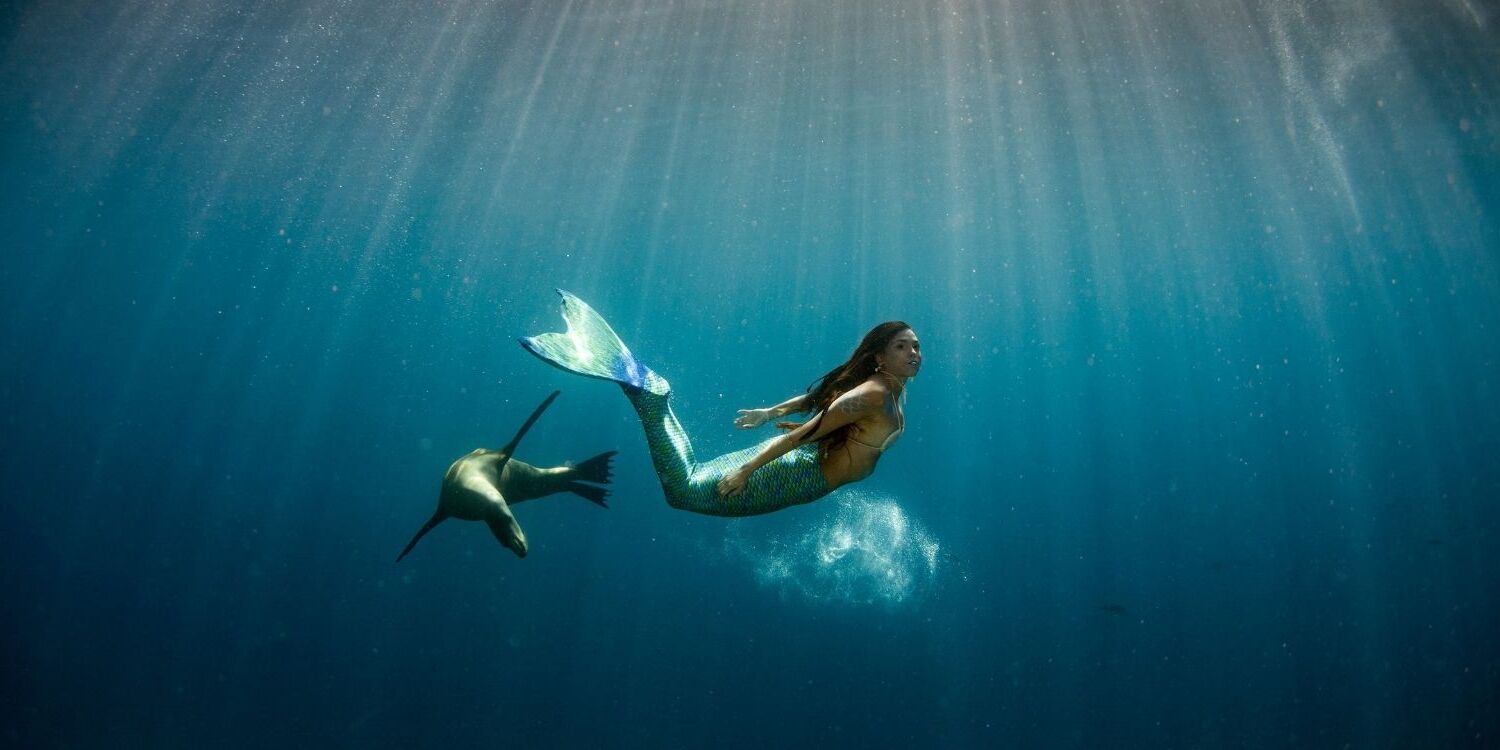
Mermaid sightings have fascinated humans for centuries. These mythical sea creatures, often depicted as half-human, half-fish, have appeared in folklore, literature, and art across various cultures. But are mermaids real or just a figment of our imagination? Some believe that these sightings could be attributed to marine animals like manatees or dugongs, which sailors might have mistaken for mermaids after long voyages. Others argue that the stories are purely mythical, created to explain the mysteries of the ocean. Whether you’re a skeptic or a believer, the allure of mermaids continues to captivate our curiosity. Let's dive into 35 intriguing facts about mermaid sightings that span history, geography, and culture.
Key Takeaways:
- Mermaids have captivated cultures for centuries, from ancient Assyria to modern-day sightings in Israel and Zimbabwe. They continue to inspire art, literature, and even mermaid-themed fitness classes.
- While some mermaid sightings may be explained by scientific phenomena, the allure of these mythical creatures persists in pop culture, folklore, and environmental activism. Mermaids remain a source of fascination and inspiration across the world.
Ancient Mermaid Legends
Mermaids have fascinated humans for centuries. Many cultures have their own tales of these mystical sea creatures. Here are some intriguing facts about mermaid sightings throughout history.
-
The earliest mermaid legends date back to ancient Assyria. Around 1000 BCE, the goddess Atargatis transformed into a mermaid out of shame for accidentally killing her human lover.
-
Greek mythology features sirens, often depicted as mermaid-like creatures. These sirens lured sailors to their doom with enchanting songs.
-
In medieval Europe, mermaids were often considered omens. Sightings were believed to predict storms, shipwrecks, and other disasters.
-
Christopher Columbus reported seeing mermaids in 1493. He described them as not as beautiful as depicted in folklore, likely mistaking manatees for mermaids.
Modern Mermaid Sightings
Even in modern times, people claim to have seen mermaids. These sightings often spark debates and curiosity.
-
In 2009, multiple people in Kiryat Yam, Israel, reported seeing a mermaid. The local government even offered a $1 million reward for proof of the creature's existence.
-
A mermaid sighting in Zimbabwe in 2012 caused a stir. Workers constructing a dam claimed they were chased away by mermaids, halting the project.
-
In 2013, a mermaid was allegedly spotted in the South African town of Suurbraak. Witnesses described a half-human, half-fish creature singing on the rocks.
Scientific Explanations
Scientists often try to explain mermaid sightings with more rational theories. Here are some scientific perspectives on these mysterious encounters.
-
Manatees and dugongs are often mistaken for mermaids. These marine mammals have human-like features when seen from a distance.
-
Hallucinations caused by dehydration and long sea voyages could explain some sightings. Sailors might have imagined mermaids after spending weeks at sea.
-
Optical illusions over water can create mirage-like effects. These illusions might make floating debris or marine animals appear as mermaids.
Cultural Impact
Mermaid sightings have influenced various aspects of culture, from literature to art. Here are some ways these mythical beings have left their mark.
-
Hans Christian Andersen's "The Little Mermaid" was inspired by mermaid legends. This 1837 fairy tale remains one of the most famous mermaid stories.
-
Mermaids are popular subjects in Renaissance art. Artists like John William Waterhouse and Gustave Moreau depicted them in their works.
-
The Starbucks logo features a two-tailed mermaid. This symbol, known as a siren, reflects the company's maritime roots.
Mermaids in Pop Culture
Mermaids continue to captivate audiences in movies, TV shows, and books. Here are some notable examples of mermaids in pop culture.
-
Disney's "The Little Mermaid" (1989) brought mermaids to a new generation. The film's success led to a resurgence of interest in mermaid folklore.
-
The TV show "H2O: Just Add Water" (2006-2010) featured teenage mermaids. This Australian series gained a cult following.
-
"Pirates of the Caribbean: On Stranger Tides" (2011) included mermaids as key characters. These mermaids were depicted as both beautiful and dangerous.
Mermaids in Folklore
Different cultures have their own versions of mermaid stories. Here are some fascinating mermaid legends from around the world.
-
In Japanese folklore, the ningyo is a mermaid-like creature. Eating its flesh is said to grant eternal youth.
-
The Celtic selkie can transform from seal to human. These creatures often feature in Scottish and Irish tales.
-
In West African mythology, Mami Wata is a water spirit. She is often depicted as a mermaid and is associated with fertility and prosperity.
Famous Mermaid Hoaxes
Throughout history, some mermaid sightings have been proven to be hoaxes. Here are a few famous examples.
-
The Fiji Mermaid was a popular sideshow attraction in the 19th century. It was later revealed to be a monkey's torso sewn to a fish's tail.
-
In 1822, a mermaid was allegedly caught in the Philippines. This "mermaid" turned out to be a hoax created by local fishermen.
-
A 2012 Animal Planet documentary claimed to show real mermaids. The show was later revealed to be a work of fiction.
Mermaid Festivals and Celebrations
Mermaid enthusiasts celebrate these mythical creatures through various festivals and events. Here are some popular mermaid-themed gatherings.
-
Coney Island's Mermaid Parade is an annual event in New York City. Participants dress as mermaids and sea creatures, celebrating creativity and individuality.
-
The Weeki Wachee Springs State Park in Florida features live mermaid shows. Performers in mermaid costumes swim in the park's natural springs.
-
The Mermaid Festival in South Haven, Michigan, celebrates mermaid culture. The event includes a parade, costume contests, and mermaid-themed activities.
Mermaid-Inspired Art and Literature
Mermaids have inspired countless works of art and literature. Here are some notable examples.
-
John William Waterhouse's painting "A Mermaid" (1900) is a famous depiction. This artwork captures the allure and mystery of mermaids.
-
"The Mermaid and Mrs. Hancock" by Imogen Hermes Gowar is a popular novel. This 2018 book blends historical fiction with mermaid mythology.
-
"The Mermaid Chair" by Sue Monk Kidd explores themes of love and transformation. This 2005 novel features a woman who becomes obsessed with a mermaid carving.
Modern Mermaid Communities
Today, mermaid enthusiasts form communities and share their passion. Here are some ways people celebrate mermaids in modern times.
-
Professional mermaids perform at aquariums and events. These performers wear realistic mermaid tails and entertain audiences.
-
Mermaid conventions bring together fans and performers. Events like MerMagic Con and MerMania celebrate mermaid culture.
-
Mermaid fitness classes offer a unique workout. Participants wear mermaid tails and swim to improve strength and flexibility.
Environmental Connections
Mermaids are often associated with the ocean and marine life. Here are some ways mermaid culture intersects with environmental awareness.
-
Mermaid activists raise awareness about ocean conservation. Groups like Save the Mermaids advocate for protecting marine environments.
-
Mermaid-themed beach cleanups encourage environmental stewardship. Participants dress as mermaids while picking up litter on beaches.
-
Mermaid art often highlights the beauty of the ocean. Artists use mermaid imagery to inspire appreciation for marine life.
Mermaid Merchandise
Mermaid-themed products are popular among fans. Here are some examples of mermaid merchandise.
- Mermaid tails for swimming are a popular item. These tails allow swimmers to experience what it's like to be a mermaid.
The Final Splash
Mermaid sightings have fascinated people for centuries. From ancient sailors' tales to modern-day reports, these mythical creatures continue to capture our imagination. Some believe mermaids are real, while others think they're just legends born from misidentified marine animals like manatees or dugongs. Whether you’re a skeptic or a believer, the stories of mermaids add a touch of magic to our world.
Exploring these sightings reveals much about human culture and our relationship with the sea. They remind us of the mysteries still lurking in the ocean's depths. So next time you’re by the water, keep an eye out—you never know what you might see.
Mermaids, real or not, will always be a part of our collective folklore, sparking curiosity and wonder in generations to come. Dive into the stories, and let your imagination swim free.
Frequently Asked Questions
Was this page helpful?
Our commitment to delivering trustworthy and engaging content is at the heart of what we do. Each fact on our site is contributed by real users like you, bringing a wealth of diverse insights and information. To ensure the highest standards of accuracy and reliability, our dedicated editors meticulously review each submission. This process guarantees that the facts we share are not only fascinating but also credible. Trust in our commitment to quality and authenticity as you explore and learn with us.


